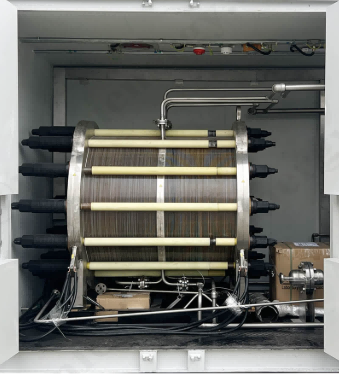Reducing Costs in Hydrogen Production How Alkaline Electrolyzers Offer a Solution Introduction
As the world shifts toward clean energy, green hydrogen—produced using renewable electricity—has emerged as a key player in decarbonizing industries like transportation, steel, and chemicals. However, a major barrier to widespread adoption is high production costs. Among the available electrolysis technologies, alkaline electrolyzers (ALK) present a promising path to cost reduction.
In this blog, we explore:
Why hydrogen production costs need to decrease
How alkaline electrolyzers work and their cost advantages
Recent advancements making ALK more competitive
The future outlook for affordable green hydrogen
The Challenge: High Costs of Green Hydrogen
Currently, most hydrogen is produced from fossil fuels (gray hydrogen), which is cheap but emits CO₂. Green hydrogen, made via water electrolysis powered by renewables, is clean but expensive due to:
High electricity costs (if not from surplus renewables)
Capital expenditures of electrolyzers
Maintenance and efficiency losses
For green hydrogen to compete, electrolyzer costs must drop significantly—and alkaline electrolyzers are leading the charge.
Why Alkaline Electrolyzers (ALK)?
Alkaline electrolyzers are one of the oldest and most mature electrolysis technologies. Compared to alternatives like PEM (Proton Exchange Membrane) and SOEC (Solid Oxide Electrolysis Cells), ALK offers:
1. Lower Capital Costs
No expensive materials: Unlike PEM electrolyzers, which require platinum and titanium, ALK uses nickel-based electrodes and liquid alkaline electrolytes (KOH or NaOH), reducing material costs.
Simpler construction: ALK operates at lower pressures and temperatures, avoiding costly high-performance components.
2. Longer Lifespan & Durability
Proven reliability: ALK systems often exceed 60,000–100,000 hours of operation with proper maintenance.
Less sensitivity to impurities: Unlike PEM, ALK tolerates varying water quality better, reducing pretreatment costs.
3. Scalability for Industrial Use
Large-scale hydrogen production: ALK systems are already used in ammonia plants and refineries, benefiting from economies of scale.
Compatibility with intermittent renewables: While PEM responds faster to variable power, newer ALK designs are improving flexibility.
Recent Innovations Driving Costs Down
While ALK has traditionally lagged behind PEM in efficiency, recent advancements are closing the gap:
1. Advanced Electrode Materials
Nanostructured nickel catalysts improve efficiency, reducing energy consumption.
Coating technologies enhance durability, lowering replacement costs.
2. Dynamic Operation for Renewable Integration
New ALK designs allow rapid load-following, making them better suited for wind and solar power fluctuations.
3. Manufacturing Scale-Up
Mass production of ALK stacks reduces per-unit costs.
4. Hybrid Systems (ALK + PEM)
Some projects combine ALK’s low cost with PEM’s responsiveness, optimizing performance.
The Future: Can ALK Make Green Hydrogen Affordable?
With continued R&D and scaling, alkaline electrolyzers could help reduce the cost of green hydrogen, making it competitive with fossil-based hydrogen. Key steps include:
✔ Further efficiency improvements (targeting <45 kWh/kg H₂)
✔ Automated manufacturing to cut production costs
✔ Integration with cheap renewable power (e.g., excess solar/wind)
While PEM electrolyzers often steal the spotlight for their high efficiency and flexibility, alkaline electrolyzers remain a cost-effective workhorse for large-scale green hydrogen production. With ongoing innovations, ALK could play a crucial role in making clean hydrogen affordable—accelerating the transition to a zero-emission energy future.
